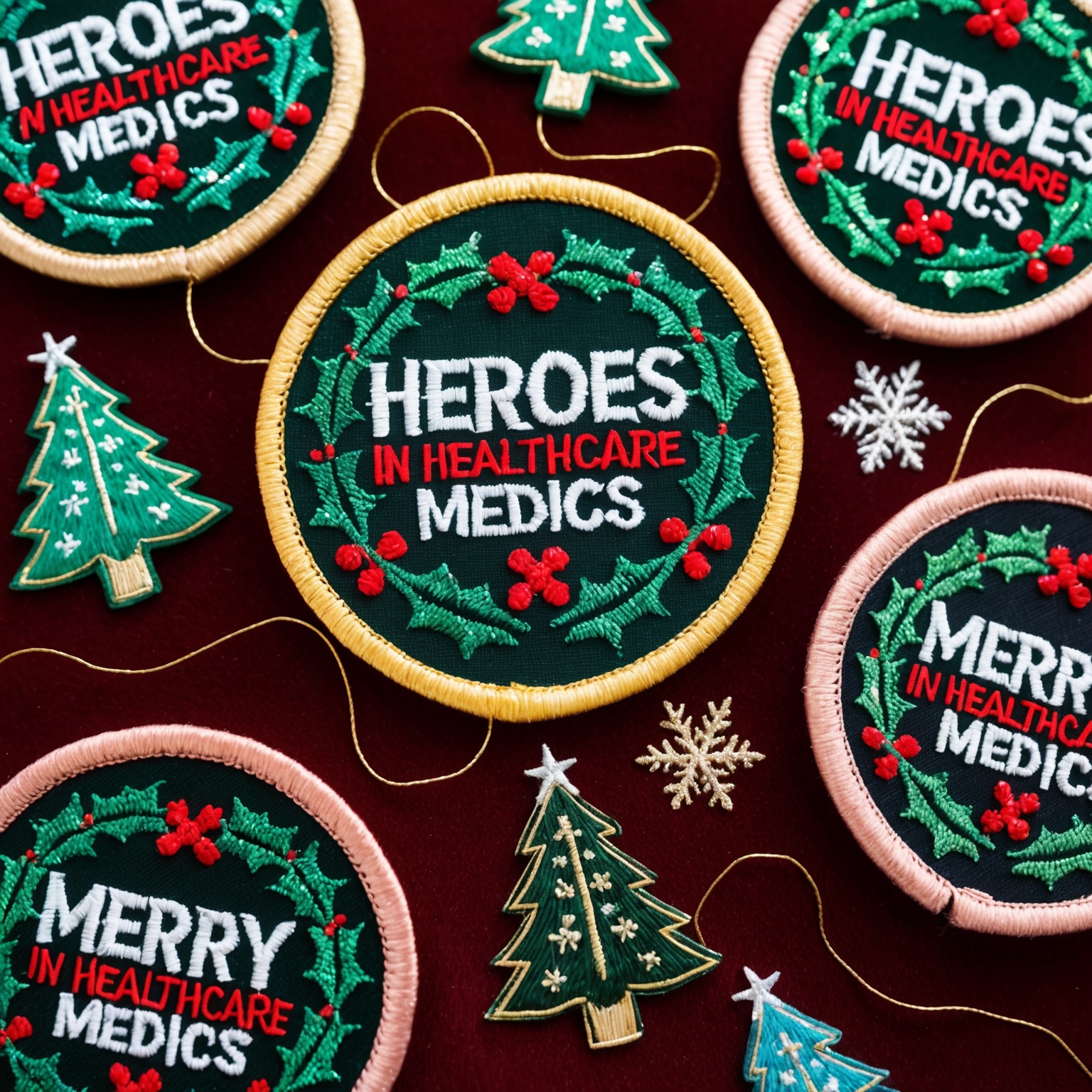The Power of Patch Exchanges
Patch exchanges have become a beloved tradition among various groups, including military units, law enforcement agencies, firefighter departments, and even scouting organizations. These exchanges are more than mere trades of embroidered insignias; they are powerful symbols of unity, camaraderie, and mutual respect. This article explores the role of patch exchanges in building bonds, highlighting their historical roots, cultural significance, and the impact they have on fostering relationships across different communities.
1. The Historical Roots of Patch Exchanges
Military Origins
The practice of exchanging patches has its origins in the military, where soldiers would swap unit insignias as a sign of camaraderie and mutual respect. This tradition helped to build bonds between units and foster a sense of brotherhood among soldiers.
Example: During World War II, soldiers from different Allied units would exchange patches as a token of friendship and shared purpose, reinforcing the unity among the forces fighting for a common cause.
Expansion to Other Groups
Over time, the tradition of patch exchanges expanded beyond the military to include law enforcement, firefighting, scouting, and various other organizations. Each group adopted the practice as a way to strengthen ties and celebrate shared values.
Example: Police officers from different cities and countries often exchange patches during international law enforcement conferences, fostering a global network of camaraderie and cooperation.
2. The Cultural Significance of Patch Exchanges
Symbols of Identity and Belonging
Patches serve as symbols of identity and belonging, representing the group’s values, achievements, and history. Exchanging patches allows members to share a piece of their identity with others, creating a sense of connection and mutual respect.
Example: A firefighter who exchanges patches with a fellow firefighter from another department gains a symbol of that department’s heritage and values, strengthening their bond through shared experiences and goals.
Expressions of Mutual Respect and Solidarity
Patch exchanges are expressions of mutual respect and solidarity. They signify an appreciation for the dedication and sacrifices of others, fostering a sense of unity and support.
Example: When a military unit exchanges patches with a law enforcement agency, it symbolizes a mutual respect for the challenging and often dangerous work each group undertakes to protect and serve their communities.
Building Cross-Cultural Relationships
Patch exchanges often take place at international events, providing an opportunity to build cross-cultural relationships. These exchanges help to bridge cultural divides and promote understanding and cooperation among diverse groups.
Example: Scouts from different countries exchanging patches at the World Scout Jamboree build relationships that transcend cultural and geographical boundaries, fostering a spirit of global unity and friendship.
3. The Role of Patch Exchanges in Specific Communities
Military and Veteran Communities
In military and veteran communities, patch exchanges are a cherished tradition that honors service and sacrifice. These exchanges often occur during reunions, commemorative events, and joint exercises, reinforcing the bonds forged in service.
Example: Veterans attending a reunion might exchange patches representing their respective units, rekindling the camaraderie and brotherhood they experienced during their service.
Law Enforcement Agencies
For law enforcement agencies, patch exchanges promote collaboration and support among officers from different jurisdictions. These exchanges can occur at training sessions, conferences, and joint operations, fostering a sense of solidarity and shared mission.
Example: Police officers attending a national conference might exchange patches with colleagues from other cities, creating a network of support and cooperation across the country.
Firefighter Departments
Firefighter departments engage in patch exchanges to celebrate their shared commitment to public safety and emergency response. These exchanges often take place at training academies, conferences, and during mutual aid operations.
Example: Firefighters responding to a large wildfire might exchange patches with crews from other departments, symbolizing their joint effort and dedication to protecting lives and property.
Scouting Organizations
In scouting organizations, patch exchanges are a popular activity that promotes friendship and cultural exchange. Scouts often trade patches during jamborees, campouts, and other events, building lasting connections with peers from around the world.
Example: A scout from the United States exchanging patches with a scout from Japan at the World Scout Jamboree creates a bond of friendship that transcends cultural barriers.
4. The Design and Meaning of Patches in Exchanges
Elements of Patch Design
The design of a patch often includes symbols, colors, and text that represent the group’s identity and values. When exchanging patches, these elements convey important information about the group’s history and mission.
Example: A police department patch might feature the city’s emblem, colors, and the department’s founding year, providing a visual representation of the department’s heritage and commitment to public service.
Customizing Patches for Exchanges
Many groups create special patches specifically for exchanges, incorporating unique designs or limited-edition elements to make the patches more meaningful and desirable.
Example: A firefighter department might produce a limited-edition patch commemorating a significant anniversary or event, making it a sought-after item in exchanges.
Personalizing Patch Exchanges
Personalizing patch exchanges by including notes or messages adds a personal touch, enhancing the sense of connection and appreciation between the individuals exchanging patches.
Example: A scout might include a handwritten note with their patch, sharing a bit about their scouting journey and expressing gratitude for the opportunity to connect with a peer from another country.
5. The Impact of Patch Exchanges on Group Dynamics
Strengthening Group Identity
Patch exchanges reinforce group identity by celebrating shared values and achievements. They serve as a tangible reminder of the group’s mission and the bonds between its members.
Example: A military unit that regularly exchanges patches with other units fosters a strong sense of pride and belonging among its members, reinforcing their commitment to the unit’s mission.
Enhancing Morale and Motivation
Participating in patch exchanges can boost morale and motivation by recognizing the contributions and dedication of group members. These exchanges validate the hard work and sacrifices made by individuals.
Example: A firefighter who receives a patch from a fellow firefighter in recognition of their efforts during a challenging operation feels appreciated and motivated to continue their dedicated service.
Fostering Teamwork and Collaboration
Patch exchanges promote teamwork and collaboration by building relationships and networks of support. They encourage members to work together and support one another in achieving common goals.
Example: Law enforcement officers who exchange patches during a joint operation are more likely to work collaboratively and effectively, leveraging their shared commitment to public safety.
6. Organizing and Participating in Patch Exchanges
Planning Patch Exchange Events
Organizing patch exchange events requires careful planning to ensure a meaningful and enjoyable experience for participants. Consider factors such as location, timing, and the logistics of exchanging patches.
Example: A scouting organization planning a patch exchange at a jamboree might designate a specific time and area for the activity, providing tables and display boards for scouts to showcase their patches.
Creating Opportunities for Spontaneous Exchanges
In addition to organized events, creating opportunities for spontaneous exchanges can enhance the sense of community and connection. Encourage members to carry extra patches and be open to exchanging them whenever the opportunity arises.
Example: Firefighters attending a training session might carry extra patches to exchange with colleagues from other departments they meet during breaks and networking sessions.
Documenting and Sharing Patch Exchanges
Documenting patch exchanges through photos, stories, and social media posts helps to celebrate and share the experiences. This documentation can also serve as a record of the connections made and the significance of the exchanges.
Example: A law enforcement agency might create a photo album or social media post showcasing the patches exchanged during a national conference, highlighting the bonds formed and the spirit of cooperation.
7. Preserving and Displaying Exchanged Patches
Creating Patch Collections
Collecting and preserving exchanged patches is a way to honor the relationships and experiences they represent. Organize and display patches in a way that highlights their significance and tells the story of the exchanges.
Example: A veteran might create a shadow box display featuring the patches they exchanged with fellow soldiers during their service, preserving the memories and honoring the bonds formed.
Using Display Boards and Albums
Display boards and albums are practical solutions for organizing and showcasing patch collections. These tools allow collectors to arrange patches thematically or chronologically, creating a visually appealing and meaningful display.
Example: A scout might use a display board to arrange patches exchanged at different jamborees, creating a timeline of their scouting journey and the connections made along the way.
Sharing Patch Collections with Others
Sharing patch collections with others, whether through exhibits, presentations, or social media, helps to celebrate the tradition of patch exchanges and inspire others to participate.
Example: A firefighter department might host an open house event featuring a display of exchanged patches, educating the community about the significance of these symbols and the bonds they represent.
8. The Future of Patch Exchanges
Embracing Technology and Digital Platforms
The future of patch exchanges may involve embracing technology and digital platforms to facilitate connections and exchanges. Virtual exchanges and online communities can expand the reach and accessibility of this tradition.
Example: A scouting organization might create a digital platform where scouts can connect, share stories, and arrange virtual patch exchanges, fostering global connections without the need for physical travel.
Innovations in Patch Design
Advancements in patch design technology can lead to more innovative and personalized patches, enhancing the appeal and significance of exchanges. Consider incorporating elements such as QR codes or augmented reality features.
Example: A law enforcement agency might create a patch with a QR code that links to a video message from the chief, adding a personal touch to the exchange and making the patch more interactive.
Sustaining the Tradition of Patch Exchanges
As the world evolves, it is essential to sustain the tradition of patch exchanges by encouraging participation and educating new generations about its significance. Foster a culture of respect, appreciation, and connection through continued engagement in patch exchanges.
Example: A veteran’s organization might host workshops for younger members, teaching them about the history and importance of patch exchanges and encouraging them to carry on the tradition.
The Enduring Impact of Patch Exchanges
Patch exchanges are more than just trades of embroidered insignias; they are powerful symbols of unity, camaraderie, and mutual respect. From their military origins to their adoption by various groups, these exchanges foster connections, celebrate shared values, and build lasting relationships.
By understanding the significance of patch exchanges and participating in this cherished tradition, we honor the bonds formed through service, dedication, and shared experiences. As we look to the future, let us embrace new opportunities and innovations while preserving the essence of patch exchanges – the celebration of unity and the building of bonds that transcend boundaries.
If you are interested in purchasing high-quality custom patches, feel free to call us at 1-866-903-4903 or fill out one of our FREE quotes here.




